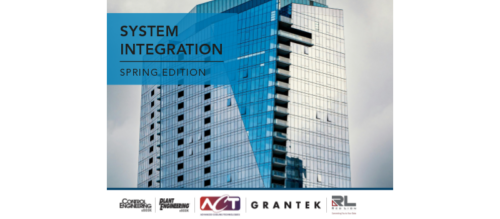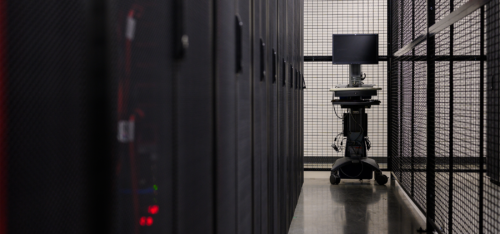Ethernet and OPC promote plant floor and enterprise-wide connectivity
The internet continues to change the way we do business. Whether we interact with suppliers by e-mail, track orders through the web, or market and sell products online, the internet is vital to what we do.
The internet continues to change the way we do business. Whether we interact with suppliers by e-mail, track orders through the web, or market and sell products online, the internet is vital to what we do. It lets us make decisions and act faster than ever before in an increasingly competitive arena.
Although the internet has been around for some time, only recently has the PC become commonplace, thanks to user-friendly software and affordable machines. With this scenario in mind, you may well ask: “Are we taking full advantage of today’s new technologies to relay data as quickly and efficiently as possible? Are we really getting better information on our manufacturing processes?”
The answers aren’t always yes. Taking measurements on the plant floor with traditional, stand-alone instruments is often challenging because proprietary field buses, device interfaces, and drivers aren’t easily connected. However, PC-based solutions are changing the rules. Increased performance, lower prices, faster data buses, and more stable operating systems (Windows NT, for example) let people and plants take full advantage of the networking, connectivity, and data acquisition capabilities of a PC. Industry standards such as Ethernet with TCP/IP and OLE for Process Control (OPC) are used more and more frequently in these PC-based measurement and automation systems to share data seamlessly across the plant floor and throughout the enterprise.
Ethernet for interoperability
Because of its speed, low cost, and multi-protocol ability, Ethernet is quickly moving out of the office onto the factory floor, becoming the universal network at all levels. Users can implement Ethernet both at higher levels of the plant hierarchy and at the control level to connect distributed I/O to PLCs and data acquisition systems. Implementing Ethernet does not require substantial financial investment because the user can easily take advantage of the existing infrastructure that connects plant floor machines, inventory PCs, and workstations to the business information level.
Ethernet supports different communication protocols, but TCP/IP, the internet backbone, is the most widely used. Ethernet and TCP/IP form a solid framework for networking and web connectivity. However, to share multiple I/Os and data acquisition devices easily with multiple PCs, the application-level protocol plays an important role.
The application-level protocol basically defines the common language used for communication between different devices. Absence of a common standard interface translates into a more expensive software solution for device connectivity, a longer learning curve for operators, and complex system maintenance. For these reasons, standards such as OPC and http are used more and more.
OPC and multivendor connectivity
OPC, a standard communication interface, enables greater connectivity between business systems, control systems, and devices. With OPC, automation systems developers overcome one of their biggest obstacles: The software connectivity required to link HMI/SCADA and other software to the many types of field devices that exist. In the past, Windows dynamic data exchange (DDE) served as a simple mechanism for this connectivity. However, DDE has many shortcomings, including low bandwidth and unreliable data integrity.
OPC is an industry variant of ActiveX, based on common object modeling (COM) and distributed COM (DCOM). These component technologies are now common industry standards and enable real-time control information servers, such as PLCs, field devices, and PC-based I/O, to communicate to standard COM/DCOM clients.
In addition, OPC provides a new level of interoperability between automation software and hardware, removing the obstacles created by proprietary industrial device interfaces and drivers. It is the answer to multivendor connectivity problems. It integrates applications developed using different lan-guages and environments and potentially running on different platforms. If your chosen software tool works with OPC, you do not need to worry about the type of driver needed to connect the hardware and can focus on software development and system integration.
Because hardware vendors know their devices the best and are aware of product changes, OPC specifications define how hardware vendors must develop servers for their devices. This standard is flexible, interoperable, and plug-and-play compliant. Currently, a software choice might depend on the support provided by the supplier of the proprietary hardware. OPC defines a standard for a common interface to communicate with a variety of industrial devices and communication protocols.
Plant floor online
Today, the connectivity provided by the internet is only part of the big picture. Handheld devices with wireless network browser capabilities let process operators access quality management analyses, monitor system per-formance, and transfer data to the plant floor without barriers. Vendor-managed inventory systems, or a supply chain visible to customers and suppliers with product tracking from order to assembly to shipment to delivery, are only a step away. These technologies open up new possibilities in real-time plant floor management with better decision making and faster response times.
Technologies such as http-based web servers facilitate this increase in connectivity. HMI/SCADA and other software will have a standard web-based interface, familiar to everyone, with no vendor limits. It will make no difference whether you use Microsoft Windows 98/2000/NT, UNIX, or another operating system.
Unfortunately, the same cannot yet be said for web-based process control. Ethernet cannot guarantee such control because it lacks determinism. The present Ethernet process of retransmitting packets in case of a collision introduces delays unacceptable to real-time control applications. However, Ethernet technology is making progress in solving these problems. Technical advances such as higher speed (100Mb) throughput, message prioritization, and switching hubs are expected to lead to the ability to transmit messages in a deter-ministic time frame.
PC-based solutions along with industry standards such as TCP/IP and OPC make real-time plant-floor information easily accessible to a variety of applications. Taking advantage of existing Ethernet-based networking infrastructures reduces implementation costs remarkably.
In addition, OPC delivers a number of benefits. Besides reduced costs for suppliers to develop and maintain proprietary interfaces and lower integration costs, OPC increases hardware option connectivity and makes networking easier. The basis of the OPC specification simply lets clients connect to servers efficiently by having each one write to a standard interface. Beyond plant boundaries, web-based applications are opening up doors to even easier control of the plant floor from anywhere at any time using a simple browser.
Stefano Zanetti has been with NI since 1995. He is responsible for promoting automation software worldwide and works with the company’s R&D staff to drive production direction. He holds a BS degree from Papio College in Ascona, Switzerland, and an MS degree from the Swiss Federal Institute of Technology in Lausanne.
Do you have experience and expertise with the topics mentioned in this content? You should consider contributing to our CFE Media editorial team and getting the recognition you and your company deserve. Click here to start this process.



